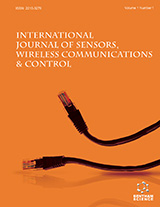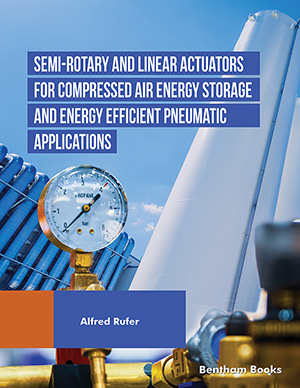Abstract
Background: Depression is a mental disorder that often negatively impacts the actions and feelings of the affected person. No laboratory tests are available to detect and properly diagnose depression. Presently, the detection of depression is done based on standardized questionnaires like the Diagnostic and Statistical Manual of Mental Disorders-fifth edition (DSM-V) and Hamilton Depression Rating Scale (HAM-D), which are subjective.
Objective: The purpose of the study is to propose a framework for more accurate detection of depression from EEG signals using only three channels, which makes the system portable as well as efficient.
Methods: In this study, we propose a classification model using EEG signal with the help of an Adaptive Neuro Fuzzy Inference System optimized by a nature-inspired algorithm. The proposed model is efficient, accurate, and portable as the features are extracted from only three channels, namely, Fp1, Fp2, and Fz. The three Data Channel (3EDANFIS) Adaptive Neuro Fuzzy Inference System (ANFIS) for detection of depression as well as three variants of Hybrid ANFIS - Adaptive Neuro Fuzzy Inference System-Genetic Algorithm (ANFIS-GA), Adaptive Neuro Fuzzy Inference System- Particle Swam Optimization (ANFIS-PSO) and Adaptive Neuro Fuzzy Inference System-Firefly Algorithm (ANFIS-FA) has been analyzed in this study. The features extracted are delta, theta, alpha, and beta and their corresponding sub-bands delta1, delta2, theta1, theta2, alpha1, alpha2, beta1, and beta2. Genetic Algorithm (GA), Particle Swam Optimization (PSO), and Firefly Algorithm (FA) are all nature-inspired metaheuristic algorithms that are used to optimize ANFIS by adapting the premise and consequent parameters.
Results: The analysis showed that the GA and FA performed equally well in optimizing ANFIS with the highest accuracy of 83.33% using delta1 power as well as delta power. The overall accuracy of the ANFIS-GA was found to be higher than that of the ANFIS-PSO, ANFIS-FA, and ANFIS. It was also found that the sub-band classification accuracy was higher than that of the band itself for delta, theta, and alpha bands. In the case of ANFIS, ANFIS-GA, ANFIS-PSO, and ANFIS- FA, delta1 was found to be having higher accuracy than delta power, theta1 was found to be having higher accuracy than theta power, and both alpha1 and alpha2 showed higher accuracy than alpha power.
Conclusion: The use of only three EEG channels for data recording makes our technique to be more feasible, portable, convenient, and faster and hence can act as an adjunct tool for psychiatrists in the future.
Keywords: Depression, adaptive neuro fuzzy inference system, genetic algorithm, particle swam optimization, firefly algorithm, DSM-V.
[http://dx.doi.org/10.1016/S0140-6736(21)02143-7] [PMID: 34634250]
[http://dx.doi.org/10.1007/978-981-13-0776-8_30]
[http://dx.doi.org/10.1155/2013/251638] [PMID: 24232245]
[http://dx.doi.org/10.1007/s10916-020-01573-y]
[http://dx.doi.org/10.1371/journal.pone.0171409] [PMID: 28152063]
[http://dx.doi.org/10.1016/j.bspc.2016.07.006]
[http://dx.doi.org/10.1007/s00542-018-4075-z]
[http://dx.doi.org/10.1109/ACCESS.2016.2637401]
[http://dx.doi.org/10.1016/j.pnucene.2008.03.007]
[http://dx.doi.org/10.1007/s13369-018-3562-y]
[http://dx.doi.org/10.1080/10916466.2018.1446176]
[http://dx.doi.org/10.1371/journal.pone.0193772] [PMID: 29702645]
[http://dx.doi.org/10.1109/ACCESS.2017.2724555]
[http://dx.doi.org/10.1109/ACCESS.2020.2969055]
[http://dx.doi.org/10.1109/ACCESS.2020.3046993]
[http://dx.doi.org/10.1109/ACCESS.2020.3037995]
[http://dx.doi.org/10.1109/ACCESS.2020.2983917]
[http://dx.doi.org/10.3758/BF03209414]
Seoul, South Korea [http://dx.doi.org/10.1109/CEC.2001.934374]
[http://dx.doi.org/10.1504/IJSI.2013.055801]
[http://dx.doi.org/10.1109/ICBAPS.2015.7292237]
[PMID: 21860844]
[http://dx.doi.org/10.1109/IJCNN.2011.6033297]
[http://dx.doi.org/10.1016/j.nicl.2015.10.014]
[http://dx.doi.org/10.1016/j.ijpsycho.2008.07.021] [PMID: 18755226]
[http://dx.doi.org/10.1590/S0004-282X2004000100008] [PMID: 15122432]
[http://dx.doi.org/10.1016/j.nicl.2017.07.006] [PMID: 28761811]
[http://dx.doi.org/10.1109/EMBC.2015.7320275]
[http://dx.doi.org/10.1109/EMBC.2015.7319310]
[http://dx.doi.org/10.1109/BIBM.2016.7822696]
[http://dx.doi.org/10.1007/s12539-018-0292-5] [PMID: 29728983]
[http://dx.doi.org/10.1155/2018/5238028]
[http://dx.doi.org/10.14419/ijet.v7i3.22.17113]
[http://dx.doi.org/10.1111/1469-8986.3720163]
[http://dx.doi.org/10.1016/j.jneumeth.2003.10.009] [PMID: 15102499]
[http://dx.doi.org/10.1007/s10548-014-0369-3] [PMID: 24793861]
[http://dx.doi.org/10.1109/21.256541]
[http://dx.doi.org/10.1109/TAC.1997.633847]
vol. vol. 4, pp. 1942-1948 Perth, Australia, 1995. [http://dx.doi.org/10.1109/ICNN.1995.488968]
[http://dx.doi.org/10.1109/TNSRE.2022.3143162] [PMID: 35030081]
[http://dx.doi.org/10.1186/s12911-015-0227-6] [PMID: 26699540]
























